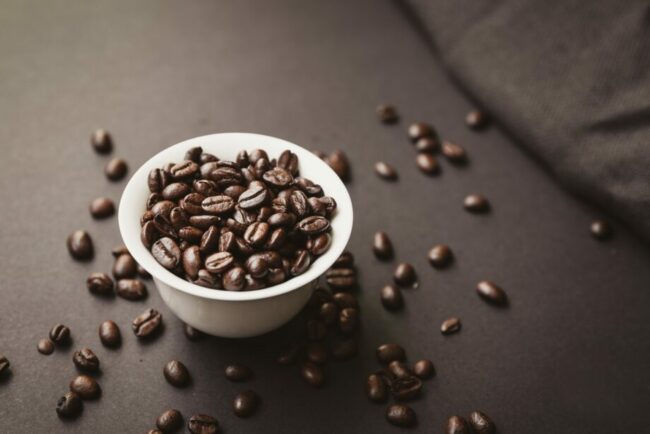Coffee is more than just a morning ritual or an afternoon pick-me-up. It’s a complex beverage with its own culture, methods of preparation, and even eating options—yes, you read that right. Eating coffee beans isn’t just for the daring; it’s a unique experience that offers both benefits and drawbacks. So, if you’re curious whether you can eat coffee beans or not, you’ve come to the right place. Let’s dive in.
Table Of Contents
−- Is Eating Coffee Beans Safe?
- What About Espresso Beans?
- The Benefits of Eating Roasted Coffee Beans
- The Risks Involved
- How Does Eating Coffee Beans Compare to Drinking Coffee?
- Should You Eat Coffee Beans?
- A Closer Look at the Nutritional Aspects
- Delightful Ways to Enjoy Coffee in Food
- How Many Coffee Beans Can You Safely Consume?
Is Eating Coffee Beans Safe?
Absolutely. Coffee beans are the seeds of the Coffea plant, and they’re perfectly edible. Some coffee aficionados even enjoy them roasted and coated in chocolate. But before you start munching away, remember that like many seeds, coffee beans are rich in certain chemicals—caffeine being the most notable. Moderation is key here, especially if you’re sensitive to caffeine or dealing with specific health concerns like pregnancy or digestive issues.

What About Espresso Beans?
You might wonder if espresso beans are any different. Espresso beans are simply regular coffee beans processed in one of two ways:
- Roasted to an espresso roast, which is often roasted hotter and for a longer period – a dark roast.
- Recommended by the roaster for brewing espresso to maximize flavor.
If you’re snacking on these beans, the “espresso roast” is what you’d likely go for since you won’t be using an espresso machine.
The Benefits of Eating Roasted Coffee Beans
Eating roasted coffee beans can offer some interesting health advantages:
Reduced Risk of Heart Disease: Numerous studies have highlighted the protective effects of coffee consumption against heart disease.
Lower Likelihood of Certain Cancers: While the research is observational, there are indications that coffee can reduce the risk of some cancers.
Reduced Risk of Type 2 Diabetes: The caffeine in coffee may have a role in reducing the risk of developing type 2 diabetes.
Improved Mood: The caffeine in both liquid coffee and coffee beans can act as a mood enhancer, potentially alleviating symptoms of depression.
Coffee beans are also a source of antioxidants, which can fight inflammation and strengthen cellular integrity.
The Risks Involved
Eating coffee beans is not without its caveats:
- Heartburn
- Nausea and Bloating
- Sleep Disruption
- Increased Heart Rate
- Caffeine Withdrawal Symptoms
It’s important to remember that these risks become more prevalent with increased consumption. A moderate approach is generally best.
How Does Eating Coffee Beans Compare to Drinking Coffee?
The health effects are essentially the same; it’s just that eating the beans can produce more intense results. The caffeine content, for example, is more concentrated in the beans. An arabica bean contains around 6mg of caffeine, while robusta beans have approximately 12mg. Some caffeine is lost during brewing, so you’ll actually need fewer beans for the same caffeine effect when you eat them.
Should You Eat Coffee Beans?
While there’s nothing harmful about eating coffee beans in moderation, most people find the experience less than pleasant. The beans are bitter, and their gritty texture isn’t everyone’s cup of tea— or should we say coffee? So, while you could eat them, there’s no compelling reason to make it a habit.
A Closer Look at the Nutritional Aspects
Antioxidants
Coffee beans are rich in antioxidants like chlorogenic acids. These help fight cell-damaging free radicals in the body.
Fiber
Did you know that coffee beans can contribute to your daily fiber intake? About 30 beans can give you up to 3 grams of fiber.
Taste
Many coffee enthusiasts prefer the robust flavor of roasted beans. However, the taste significantly varies depending on the roast level.
Delightful Ways to Enjoy Coffee in Food
If the idea of munching on plain coffee beans doesn’t excite you, here are some delicious alternatives:
Chocolate-Covered Coffee Beans
A blend of chocolate and coffee is a match made in heaven. Simply dip roasted coffee beans in melted chocolate and let them cool.
Coffee-Infused Mole Sauce
Spice up your Mexican dishes with a mole sauce that incorporates brewed coffee.
Coffee-Based Desserts
From coffee ice cream to espresso brownies and tiramisu, the possibilities are endless.
How Many Coffee Beans Can You Safely Consume?
According to the Mayo Clinic, a healthy adult can safely consume up to 400mg of caffeine per day. That’s equivalent to about 30-60 coffee beans, depending on their type.
In conclusion, coffee beans can be consumed and offer a unique way to enjoy your caffeine fix. However, the benefits are very similar to those you’d get from drinking coffee, and for most people, a freshly brewed cup is simply more enjoyable. So, whether you decide to eat them or stick to your coffee mug, the choice is yours. Cheers!

Editorial Staff
Our writers, editors, content managers, and SEO specialist. We all take part in crafting amazing articles. We spend hours ensuring that each article is based on facts, researched, and thorough. You'll never want to click the back button to look for more answers other than here!
